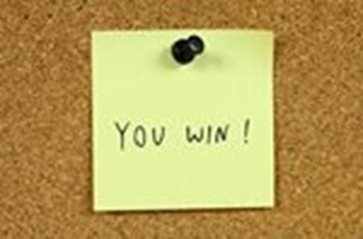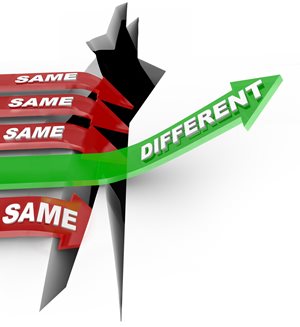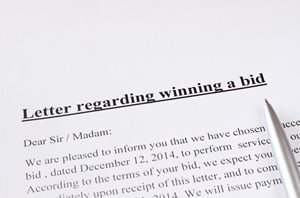Work Winning : Win Themes – What are they ? And how do you develop & exploit them ?

‘Win Themes’ are often mentioned by those who write bids as the holy grail of writing winning bids.
However, when asked, the same people are remarkably vague about what they are and how you develop them.
This article aims to demystify what they are and how to develop and exploit a Win Theme.
What is a ‘Win Theme’ ?
Here are two definitions :
“An attractive approach that supports and gives meaning to a tender, that resonates with the key stakeholders and addresses both their explicit as well as their implicit needs” [1]
or slightly less high level :
“Win themes are higher level (meta theme) features and benefits that transcend the entire proposal. Effective proposals usually have no more than one or two win themes that are focused on what customers care about the most” [2].
See what I mean about people being a bit vague or abstract ? Let’s go back to basics. To re-cap from a previous blog in December 2015 [3] :
- a ‘Feature’ is an aspect of your offer : something that you will do or provide as part of a solution; whereas
- a ‘Benefit’ is something of Value to the Buyer. It’s a client centered output or outcome of your solution and its Features.
For me, there are two basic types of Win Themes :
- A Benefit centred Win Theme where you are consistently highlighting how your solution and its Features link to one client-centered Benefit. You therefore have to be pretty sure that the Benefit is really important to them and focusing on it will, in the words of a previous blog [3], ‘discriminate’ or ‘differentiate’ you from the competition. This assumes, however, that the competition have not adopted the same Win Theme as you !
- A Feature centred Win Theme where you have a particular Feature – ideally a Unique Selling Point (USP) which no other bidder has - which you consistently link to a number of Benefits.
Why are Win Themes important ?
 If you haven’t guessed it already, its because a correctly chosen win theme applied consistently across a bid will increase the chances of you winning the bid.
If you haven’t guessed it already, its because a correctly chosen win theme applied consistently across a bid will increase the chances of you winning the bid.
This is because a well actioned Win Theme indicates a client centric approach and joined up coherent thinking. It goes some way towards answering the question “why me above the other bidders ?”
This compares with :
- different contributing authors having their own individual Win Themes, which may mean each section of answers e.g. commercial, has a different Win Theme; or
- less good, each answer having its own Win Theme, with the net result that there are no Win Themes; or
- better than nothing, each author and answer having a scatter gun approach to Feature-Benefit statements; or
- worst of all and most commonly, a plain boring technical answer to a question with no consideration of the Benefits to the Buyer.
Which approach do you think will beat the competition ?
How do I develop & exploit a Win Theme ?
To develop a Win Theme, the short answer is :
1. Get close to your client and understand what matters to them.
2. Work out what is really important to them and in particular, those who will mark your bid.
3. Develop speculative Win Themes. You can do this before the Invitation to Tender lands.
4. Select the one or two which combine having the most substance and will differentiate you most in the eyes of the client.
Let’s just dissect parts of that last point. By ‘having the most substance’ I mean, at a minimum, you are have adapted your delivery approach beyond what the ITT and provisional contract calls for i.e. it’s a tailored solution. Ideally, your organisation has a genuine Unique Selling Point which other bidders cannot replicate. By ‘differentiate you most in the eyes of the client’ I mean the Benefit(s) actually matters to the client.
You can develop Win Themes by approaching from either end of the Feature-Benefit spectrum :
- For a Benefit centred Win Theme, you start with the Benefit and work backwards to develop the overall solution and its Features that will deliver the chosen Benefit;
- For a Feature centred Win Theme, you identify your USPs and then think through how each will Benefit the client. If you find they do not, do not use it as a Win Theme !
To give an example from one bid I have been involved in : the Contractor has many large construction sites around the site of the major project it is bidding for. That is their USP. The sustainability agenda is important for the client in terms of local jobs for local people, short journeys, involving and consulting local people etc. . It is part of the scoring criteria. What we are working out is all the ways in which the USP can produce specific Benefits – subsets of the sustainability– in order for it to be a Win Theme.
Having chosen a Win Theme or two, you need to exploit it. This means :
5. Briefing all writers on what the Win Themes are and why they matter to the client. This includes deciding on the specific wording to be used e.g. if 'collaborative working' is what turns the client on, you don't want people replacing it with 'partnering';
6. Storyboarding out each response on how and where you are going to use the Win Theme in that response;
7. Write the responses;
8. Review, improve and refine each response so that the sum is greater than the whole : not only does each answer score highly as a stand-alone response, but there is winning theme throughout the bid. I.e. as well as reviewing each response for consistent branding and style, you are reviewing it for a consistent message.
If there is then a subsequent presentation or interviews, the Win Theme also needs to shine through.
Summary
 A well developed and exploited Win Theme can help differentiate your bid from the competition. However, you do not write the bid and then think of a Win Theme : you need to prepare and plan ahead before you start to write and that takes a bit of time, effort and thought.
A well developed and exploited Win Theme can help differentiate your bid from the competition. However, you do not write the bid and then think of a Win Theme : you need to prepare and plan ahead before you start to write and that takes a bit of time, effort and thought.
But the prize should be worth it. Otherwise, why are you bidding ?
[1] Definition taken from The Advance Consultancy Ltd Work Winning slideset
[2] Source : http://www.captureplanning.com/articles/what-is-a-proposal-theme.cfm
[3] Work Winning : ‘F-A-B, CAPTAIN’ OR ‘F-USP-D’ ?, December 2015